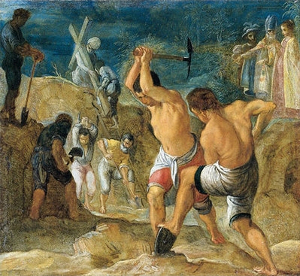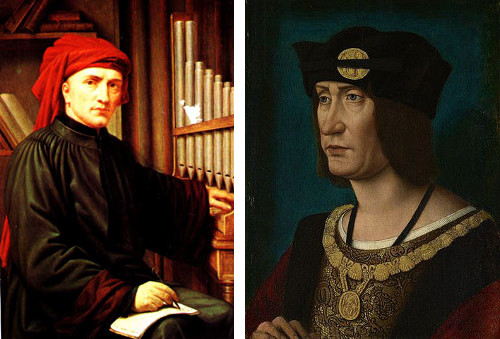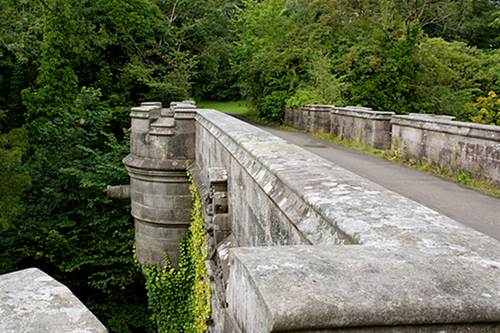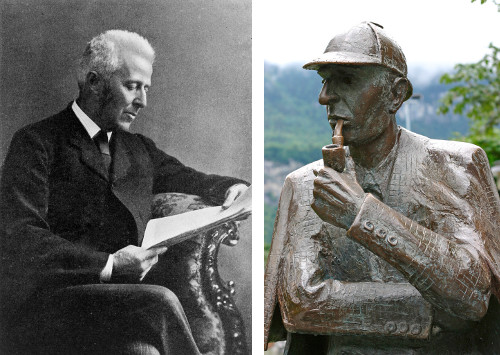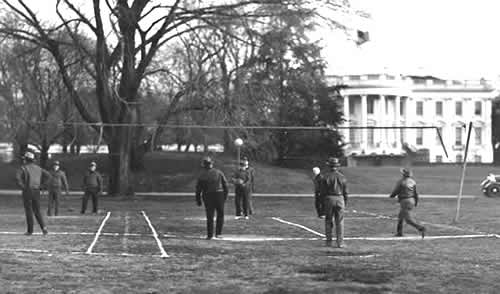
Herbert Hoover weighed 200 pounds when he entered the White House in 1929. He couldn’t spare time for golf or tennis, so physician Joel Boone invented a game called Hooverball that could give him a strenuous workout in the minimum time.
On a tennis-like court, two teams of three players throw a 6-pound medicine ball back and forth over an 8-foot net. Sports Illustrated noted, “This cannot be accomplished graciously.” Rules:
- The ball is served from the back line.
- The ball must be caught in the air and immediately thrown back from the point where it was caught. It cannot be carried or passed.
- Points are scored when a team fails to catch the ball, fails to throw it across the net, or throws the ball out of bounds.
- A ball caught in the front half of one team’s court must be thrown to the back half of the opponents’ court. If it doesn’t reach the back court, the opponents score a point.
- Scoring is exactly like tennis. The serve rotates among one team’s members until a game is won, then passes to the other team.
- A ball that hits the line is good.
- A player who catches the ball out of bounds can return to the court before throwing it back.
- A ball that hits the net but passes over is a live ball.
- Teams can make substitutions when the ball is dead.
Hoover played with his friends at 7 a.m. every day, even in snow. The regulars included the president, Boone, Supreme Court justices, Cabinet members, and journalists such as Mark Sullivan and William Hard. Talking shop was forbidden, and after the game they gathered on the White House lawn for juice and coffee.
“The regimen worked well for the president,” writes biographer Glen Jeansonn. “By the end of the term he had firmed up and slimmed down to 179 pounds. … Hoover looked forward to the games and the camaradarie, although he did not like rising quite so early. But the games were energizing and he began each day refreshed and relaxed.”
The Hoover Presidential Foundation, which co-hosts a national championship each year, has a complete set of rules.
